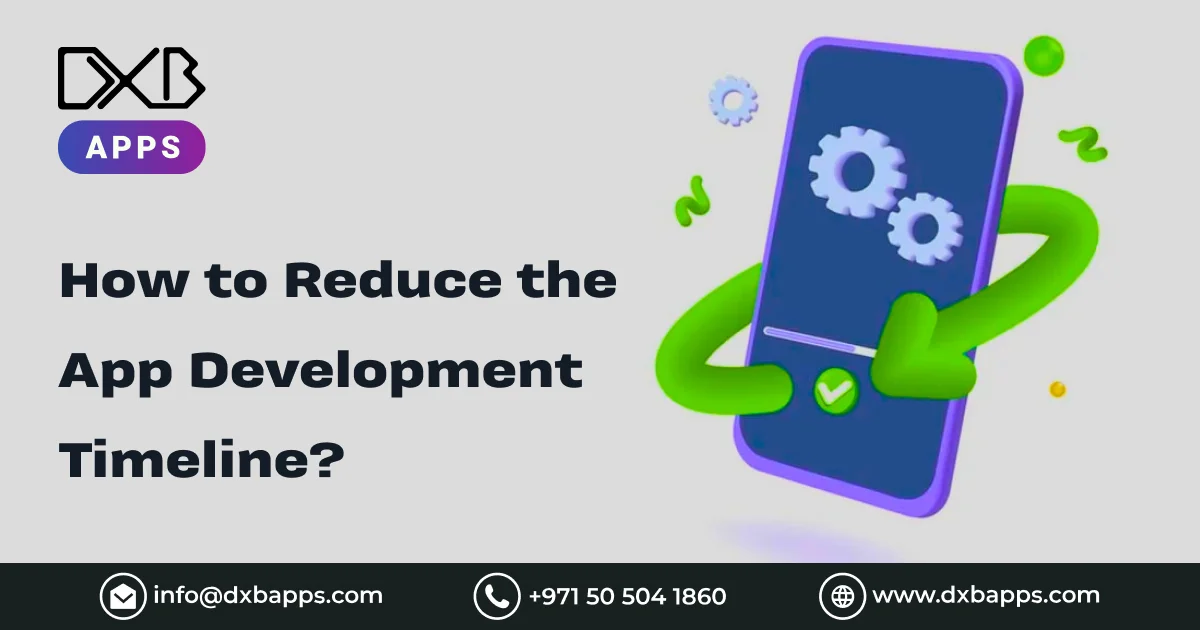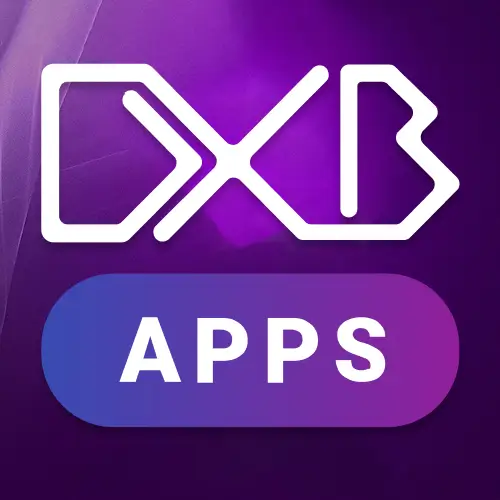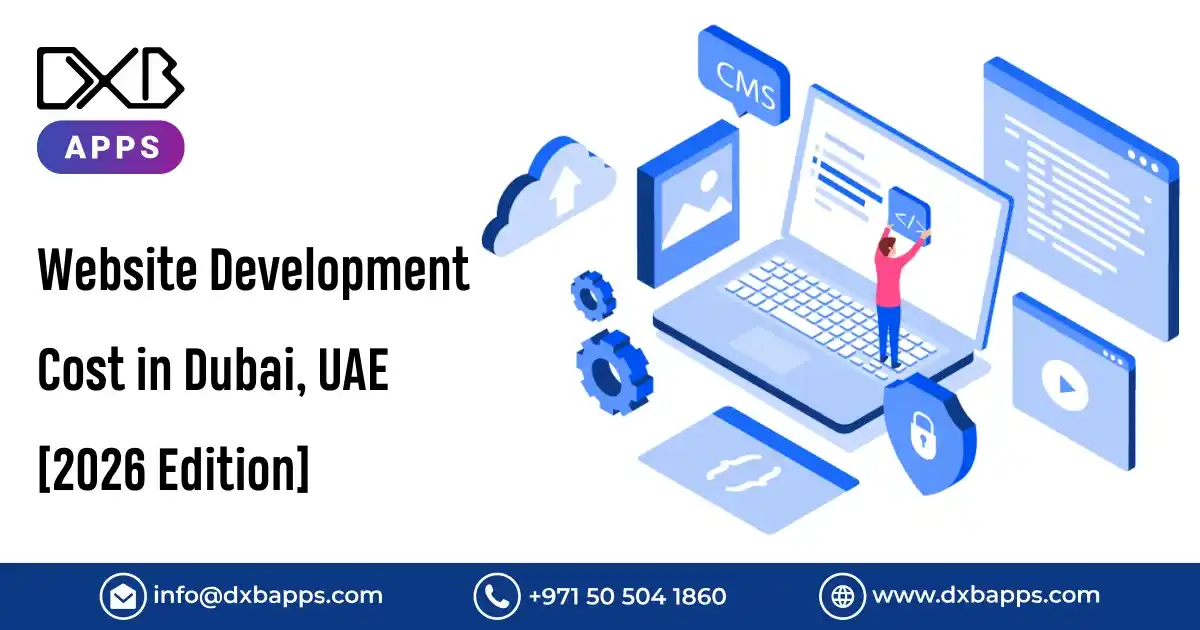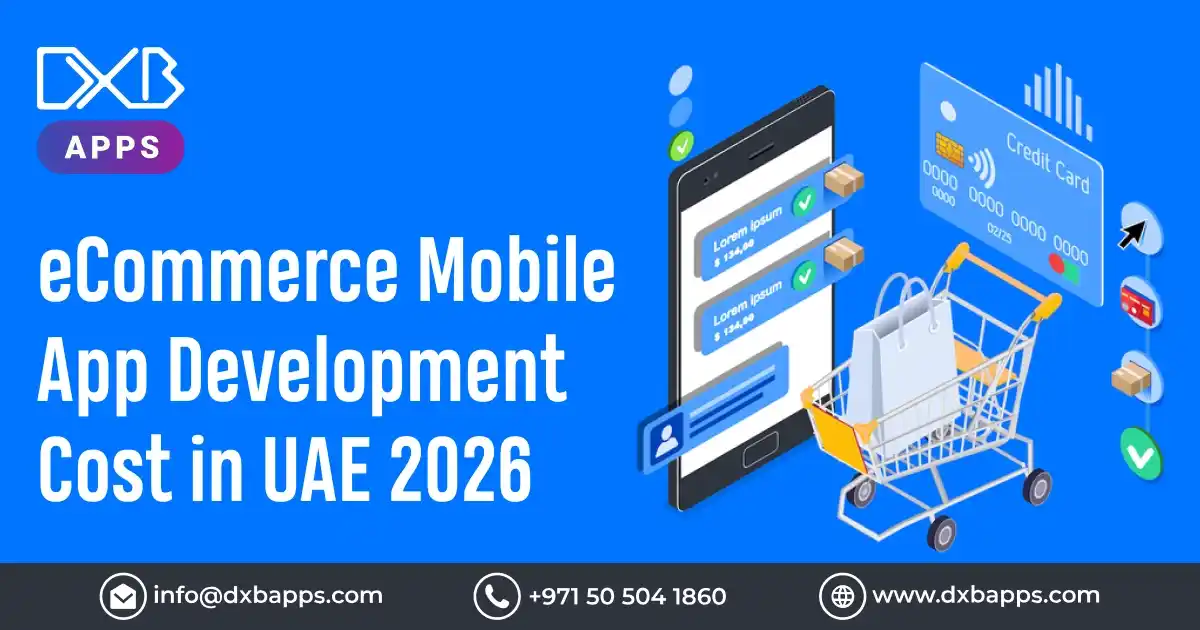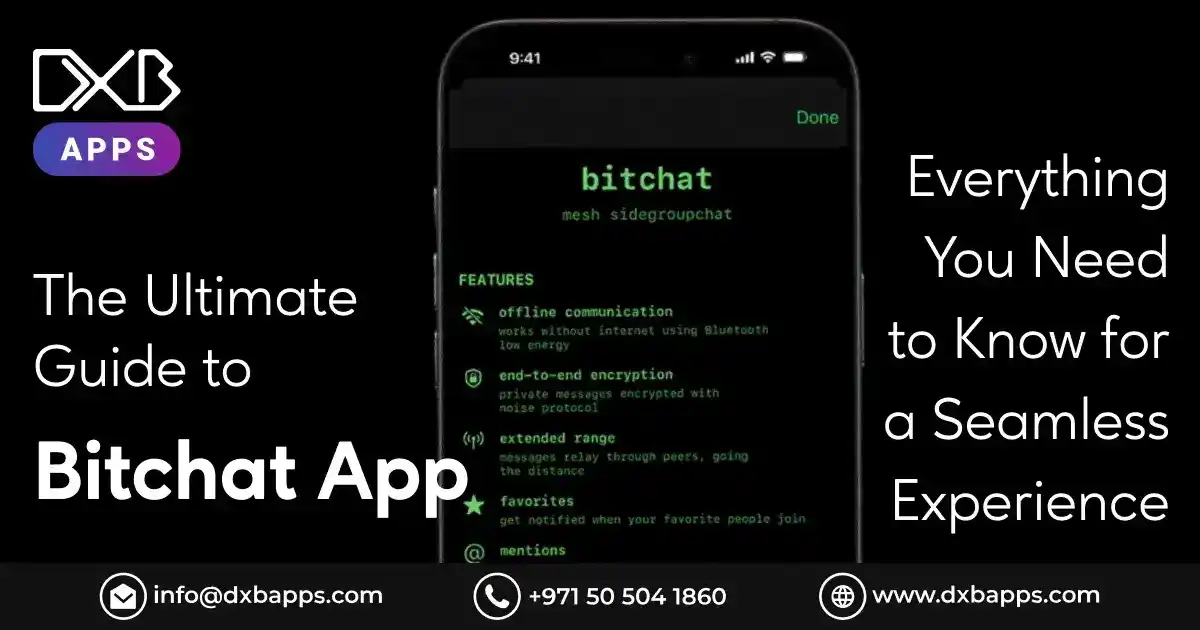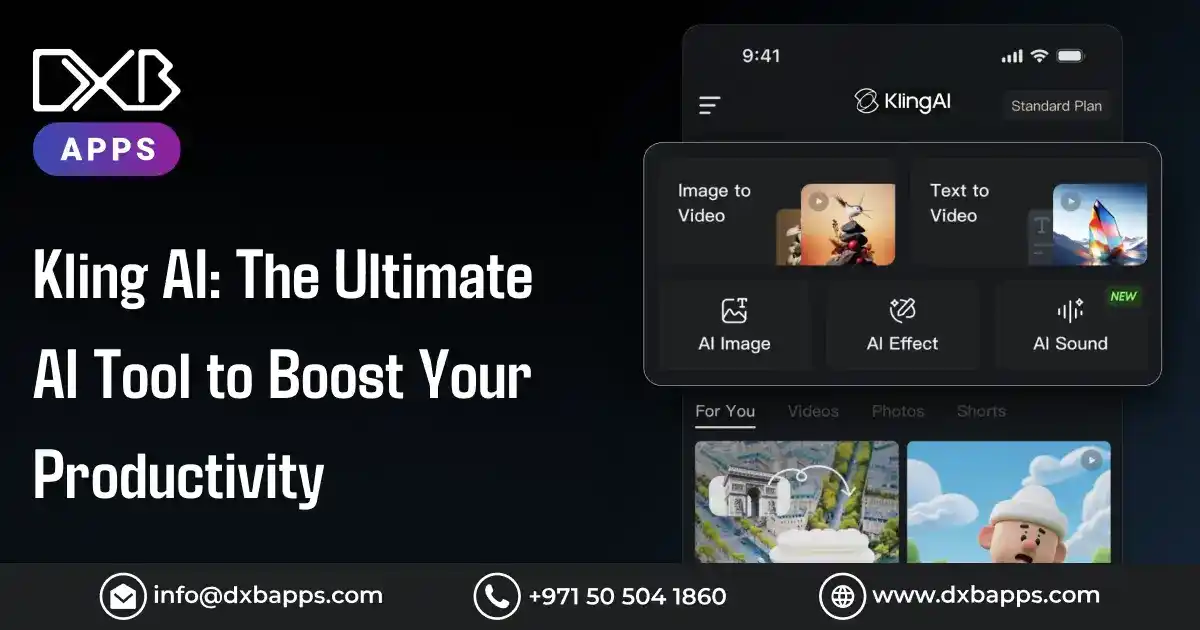In the digital age, nowadays, the time taken by a mobile application to market can be either a damper or the wind beneath its wings. The apportioning of the appropriate timeline for mobile app development is critical for the success of any business. It is especially noteworthy when stiffly competitive markets and innovation require creativity to stay one step ahead. Therefore, decreasing the application development timeline is quite a Herculean task when quality does not get hampered, which requires strategic planning, efficient processes, and a highly skilled development team.
The mobile app development timeline refers to the time it takes to move an application from an initial concept to the final launch. A mobile application of average complexity will take 3 to 4 months to develop. More complex apps will require 6 to 9 months or even more. With the right strategy, the ideal timeline may drop dramatically, allowing businesses to deploy their go-to-market strategy for the product faster.
A survey found that about 45% of mobile apps are developed throughout 4 to 6 months. This number further indicates that these industries are moving towards swifter development cycles. Companies are adopting agile methodologies, automation tools, and many more, the latest practices to achieve a minimal time-to-market to stay in the race.
Some Key Strategies to Help Lower the Timeline of App Development
1. Begin with A Very Clear and Detailed Plan:
Start with detailed planning to reduce the estimation time taken for app development. This planning app development phases needs to have a very detailed wireframe set complete, clear objectives, and a definition of the main characteristics of the application. Planning is done with extreme detail so that all stakeholders properly scope everything included and eliminate scope creep, a prevalent cause of delays.
For example, during the planning stages of app development, design the application development life cycle to incorporate proper division for design, coding, testing, and deployment. This way, the pace of work is sustained throughout by keeping the milestones and deadlines realistic.
2. Adopt an Agile Development Methodology:
High-level Agile is one of the most vivid development methodologies. It divides app development into small, manageable tasks called sprints. These sprints pay attention to some features and functionalities so that developers can keep enhancing the app according to testing and user reviews. This not only facilitates the development process and brings the benefits of faster business growth but also improves the quality of the final result.
3. Use Pre-Built Components and Frameworks:
Developers should reduce the time spent creating a mobile application by using pre-built components, templates, and frameworks where possible to save time. Such templates and frameworks provide a base over which the app will be built; this way, one doesn't have to start coding essential functions from scratch.
For example, implementing a standard user authentication feature would take weeks without the use of pre-built libraries. Likewise, React Native or Flutter frameworks save a lot of valuable development time since developers can now write cross-platform apps from a single codebase instead of two, one for the iPhone app development timeline and another for the Android app development timeline platform.
4. Build with Core Features First and Launch MVP:
When you have little time, focusing only on what needs to be developed first is critical. Focus on these core features so that the application can start running and reach an MVP, an app with only enough features to satisfy early customers. You can always add bells and whistles later and continuously improve the app's features.

Best Practices for Speedy Enterprise Application Development
1. Automated Testing and Deployment:
Two of the most extended parts of the application development process are testing and deployment automation, which saves the time needed to get an application up and running. A CI/CD pipeline enables developers to test changes in the code and deploy updates automatically. It will ensure that nothing breaks during the development lifecycle.
Automation tools such as Jenkins, CircleCI, and GitLab CI/CD smoothly and efficiently carry out testing and deployment into production in an Industrial setup. They expedite the development process and help capture more bugs early, preventing costly delays in the future.
2. Engage in Parallel Development:
The parallel development method involves dividing the app into independent development modules. With independent development modules in an extensive application, parallel execution within a definite timeline is most valuable. Thus, parallel development can shorten the overall mobile application development timeline.
For instance, one team can be designated to develop the front end while another works on integrating it with the back end. Such a division of labor ensures that everything about the app is designed in tandem and will, therefore, be completed quickly.
3. Optimize Communication and Collaboration:
Communication and collaboration will be a great way to trim the stages of creating the app. Slack, Trello, and Asana ensure real-time communication and project management features, keeping all team members abreast of their responsibilities. It is also good to hold regular meetings with regular updates, as this will pinpoint potential pitfalls in good time, allowing the team to clear them out quickly.
This can also be done through a centralized code repository like Git, which enables all developers to access the real-time codebase without conflicts between versions. It ensures a smooth development process.
"As many organizations know, great things happen fast when people work together smoothly."
Real-World Examples of Development Cycles Being Cut Short
1. The Wild Success of Instagram's Laser Speed:
Instagram is one of the world's most popular social media platforms, but its development took only 8 weeks. Its co-founders, Kevin Systrom and Mike Krieger, worked on only its core features, photo sharing, and filters, and launched the app as an MVP.
2. Dropbox: Agile Approach
Dropbox pursued an agile development approach to reduce its app development timeline and cost and minimize the duration. By identifying only core functionalities and applying iterative development cycles, Dropbox rapidly launched its MVP, which needed further improvements based on customer feedback.
3. Parallel Development in Microsoft Teams:
An excellent example of a development practice is parallel development, which can be cited with Microsoft Teams. The application was developed by different teams that worked on different functionalities simultaneously—a factor that propelled the quicker launch of the app.
Challenges and Ways of Reducing the Time to Market of an App
Although the benefits of a shorter mobile app development lifecycle are quite tangible, the process does have its pitfalls, one of the major ones being quality concerning an application.
1. This perennially results in bugs, performance issues, and a bad user experience that a user is bound to have with the app.
2. Reducing the timeline mostly means working under stringent schedules that invite team burnout and low productivity.
3. Aligning all members of the team to the project's objectives. This is likely to bring collegial wrangling that may lead to losses in time and rework, which piles up on the app development time estimation.
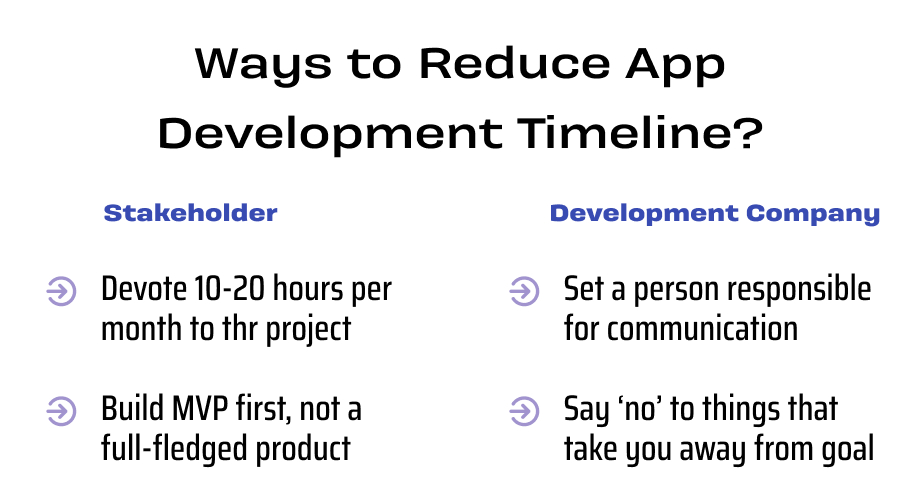
DXB APPS - Your Partner in Fast and Efficient App Development
At DXB APPS, we understand that time is critical in mobile app development. Our mobile app developers Dubai team is among the most experienced, and we are willing to provide our clients with the best apps in the shortest time possible.
Whether it is an iPhone app development timeline or an Android app development timeline, we do not follow the traditional timeline suit but consider your needs unique. Being the trusted mobile app development company in UAE, we are a team of experienced mobile application developers with several successful projects to our credit delivered as scheduled and within the cost estimates.
Conclusion
Minimizing the app development timeline itself is one of the strategic moves in the current high-growth App-based business environment. These include detailed planning, agile development, automation, and parallel development, which will be discussed more in this article. It will be able to advance the processes involved in creating the app creation timeline without any compromise of its quality.
FAQs
How many months would it take to create an application while using the developers’ team?
This is because good coordination of the development team is necessary in managing development efforts; hence, timelines can be effectively managed. Consequently, it will take between 3 and 9 months to complete a working App, depending on the size of the project and the team’s experience level. Development time can be reduced by effective and efficient cooperation, planning, and an agile method.
How long does it usually take to get an app approved in Google Play?
Typically, it takes to approve apps on Google Play is 2-7 days. Nevertheless, it can take less or more time than it might take to complete an app that does not meet all the requirements set by Google, depending on the app’s difficulty and the load when the submission is made.
How long does it usually take to approve an app in the Apple App Store?
The general time taken to approve an app that has been posted in the Apple App Store is 1-3 days, depending on the app, the current workload of the Apple Store, and the extent to which the app conforms to set standards. Apps that might be reviewed in detail may take a long time to show up in the store.
On average, on which date should one expect that the app will have gained its first thousand users?
The first 1,000 users may be achieved based on several factors, such as the application's marketing campaign, the target audience category, and the measures it takes to engage the users. Assuming a marketing plan is in place, achieving this feat can take several weeks to a few months.
How will I know that the apps are ready?
The timeline will significantly depend on the type of app you want, its functionality, and its development strategy. The time needed to build an application also varies depending on its complexity. In contrast, basic applications can take three to four months, and developing more complex applications may take six to nine months or even more.

